Content marketing strategy: A practical guide
Sponsored by Semrush, edited by Nichola Stott.
In this guide, you’ll learn how to create a content marketing strategy that actually gets results.
No fluff.
No vague advice.
Just actionable steps backed by fresh data.
Specifically, how to:
- Set goals that actually mean something
- Know your audience
- Plan your content (and stick to it)
- Optimize for search engines (without being spammy)
- Choose your content types and channels wisely
- Leverage AI (but don’t rely on it completely)
- Promote your content
- Track your results
Let’s dive in.
What is a content marketing strategy?
A content marketing strategy is your plan for creating and distributing content that attracts your target audience and turns them into customers.
Sporadic content creation has no place in your marketing strategy. It’s as ineffective as casting seeds to the wind.
The difference between creating content purely for fun and creating content that gets results lies in thoughtful planning.
It’s about creating the right content for the right people at the right time.
And when you do?
You’re planting deep roots in the rich soil of your niche market, growing a forest while others struggle to sprout seedlings.
Here’s how to grow some beautiful and functional content marketing plants.
Step 1: Set goals that actually mean something
“Increase brand awareness” and “boost lead generation” aren’t goals. They’re wishes.
Let’s explore why in terms of the most common goal-setting pitfalls of content marketing strategies, which include:
- Being vague: For example, “I want to improve SEO results.” Questions remain about what precisely you want to improve and what you propose doing about it.
- Chasing vanity metrics: Say you set a goal to improve traffic volume without considering the importance of attracting qualified buyers. The resulting asset boosts traffic but fails to convert visitors into buyers.
- Ignoring business objectives: For instance, leadership is pushing the creation of a content asset or campaign that directly conflicts with intelligence about your target customer
You may be familiar with the SMART goals framework. Defining SMART goals—then following through—will set you up for real results.
Let’s say that you’re tasked with developing a content marketing plan for a web hosting company.
Here’s an example of a SMART goal that can lead you to success:
- Specific: We’ll generate 50 new web hosting plan signups per month via the company’s blog content by adding contextual calls to action (CTAs) on the assets that represent high-intent traffic
- Measurable: We’ll use conversion tracking on Google Analytics to set up a report that accurately enumerates the new customers converting from these blogs
- Achievable: We’re currently earning 30 new customers per month via the company’s blog content, with a current growth rate of 10% month over month. Without any further changes to the strategy, we would achieve this goal in around six months.
- Relevant: By adding contextual CTAs, we’re able to more effectively direct high-intent visitors toward converting
- Time-bound: With our updated strategy, we’ll achieve this goal within three months of starting
The more specific your goals, the better your chance of achieving them.
Wondering if your strategy is actually making a difference?
You’re not alone.
For 10% of teams, the biggest challenge in creating great content is a lack of tools to measure their content marketing’s impact, a 2023 Contently report shared.
Attribution is where things get murky.
There may be multiple touchpoints that occur between the awareness stage and finally becoming a customer.
Knowing this, you’ll want to set content marketing KPIs that help stakeholders understand how assets are performing according to the buyer’s journey stage they were created for.
Depending on whether you’re targeting the top or bottom of the funnel, you may want to measure details like the conversion rate, attributed revenue, and organic traffic growth rate.
Here are a few additional examples of content marketing strategy goals to kick-start your ideating:
- Attribute $75,000 in sales pipeline to content marketing this quarter
- Reduce customer churn by 4% this quarter with problem-solving support content
- Increase organic traffic by 10% over the next six months
Still not sure where to go next?
Semrush’s keyword research tools and the Content Marketing Toolkit are great resources for setting realistic traffic goals using search volume and difficulty.
Start your keyword research
Explore the largest keyword database.

Tip: Connect content to revenue. We’ve already touched on this, but it’s worth repeating—you don’t want to attract a lot of website traffic if there’s little chance it will convert. And don’t just take our word for it: around 38% of marketers create content to directly increase revenue, according to Parse.ly.
Step 2: Know your audience (like, really know them)
Do you know who you’re creating content for?
If the answer is “no,” it’s time to halt production and take a step back.
But don’t get discouraged!
Let’s walk through the tangible actions you can take to get to know your audience.
Survey your existing customers
The web is a treasure trove of insights about your potential customers. It’s easy to get lost in all this existing information and accept it at face value without further digging.
But you’re doing your content operation a disservice if you don’t push up your sleeves and do a little bit of original research with existing customers and other individuals who represent your ideal customer.
Here are some subjects to ask about as you research your audience:
- Their challenges and pain points
- Preferred content formats
- Topics they’re interested in learning more about
Having a dynamic/synchronous conversation will yield the best insights. But that’s not always possible.
As a backup, use your favorite form tool to create quick, easy-to-answer questionnaires for those who are unable to connect over a call.
Interview past prospects
While you’re doing this research, reaching out to leads who engaged with your content but didn’t become customers can also be impactful.
Specifically, your outreach should focus on determining:
- Why they didn’t choose your product or service
- What content they found helpful throughout their buying journey
- What content was missing
Tip: For the most valuable insights, be clear that you’re looking for information and not trying to sell to them.
Use social listening tools
Implement social listening tools to monitor conversations about your brand, products, and industry on social media.
Sprout Social, Hootsuite, Awario, or Mention can help automate data collection. Once you set up your system, ensure you follow through by planning time to review insights regularly.
Importantly, pay attention to the language your audience uses when they mention your brand, as well as related topics they discuss frequently.
Want unfiltered, snarky opinions about your brand and industry as a whole? Hit up Reddit. Find relevant subreddits, lurk, and learn.
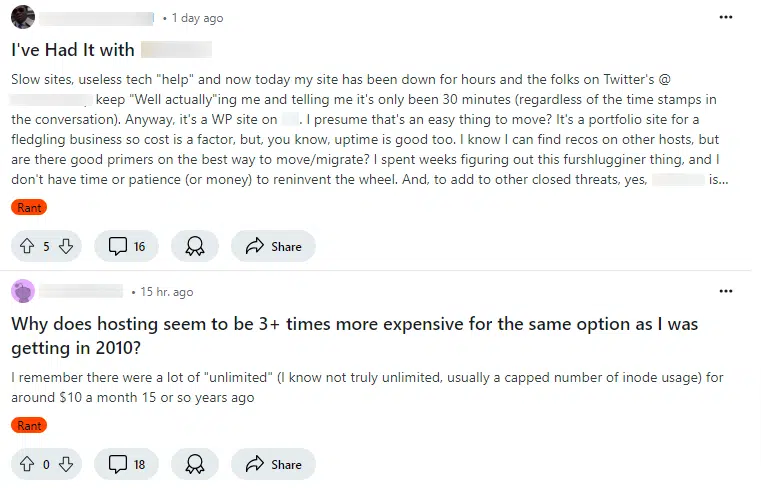
You’ll get raw customer insights that no focus group can match—that’s the power of anonymity.
Analyze your top customers
Armed with website data from your own properties, the web, and the qualitative interviews you’ve done, it’s time to start making sense of it all.
Specifically, use your data to answer questions like:
- What do these ideal prospects and customers have in common?
- What are the commonalities in terms of demographics, industry, company size, and purchasing behavior?
- What are the patterns in terms of how they found you and what convinced them to buy?
Create actionable personas
Over 70% of B2B buyers prefer content that drills down into relevant or specific topic areas, according to a 2023 Content Preferences Survey by Demand Gen Report.
Get specific with your audience targeting. All of these data-gathering and analysis activities have been building up to this step.
Take what you’ve learned and translate it into a buyer persona document that includes, at minimum, your target customers’:
- Most likely job role(s)
- Top three challenges
- Preferred content formats
- Key buying decision factors
- Preferred information channels
Semrush offers straightforward, plug-and-play persona templates that can get you up and running fast.
Once you’ve completed the template, share the final buyer personas with the rest of your marketing team. Plan to revisit these regularly.
Note: Remember that less is more. Focus on the information that actually impacts your content decisions. Avoid irrelevant details that don’t help your content marketing strategy.
Step 3: Plan your content (and stick to it)
Random acts of content don’t work. You need a plan.
Determine content pillars, create a system for evaluating and prioritizing content, and set a realistic schedule reinforced by a content calendar.
Choose your content pillars
Relevance is more important than ever when it comes to planning content topics.
As a cautionary tale, consider what happened to Hooke Audio’s 3D audio blog after the March 2024 spam update.
When they published thousands of new pages that centered around famous people, they were penalized due to the seemingly irrelevant nature of this large influx of new content compared to the niche they otherwise operate in.

Don’t be like Hooke Audio.
Instead, create content pillars that make sense based on your business, your industry, and the solutions your target customers seek from companies like yours.
Start with 3-5 core topics; they form the foundation of your content strategy.
Here are a few things to think about for developing content pillars:
- Get inside your customer’s head: What problems are they itching to solve? Your content pillars need to scratch that itch.
- Think long-term: Your content pillars should be evergreen. They need to stay relevant even when the next big industry shake-up hits.
- Be your own advocate: While Batman is cool, you need to become Tony Stark to succeed in this market. In other words, be upfront about who you are and write about the stuff that makes your business unique. That’s your pillar material.
If you’re looking for a helpful copilot in these endeavors, check out Semrush’s Topic Research tool.
By simply entering a topic, you can start exploring related topics and topic clusters, view trending topics, find content gaps and opportunities, and even dig into local potential.
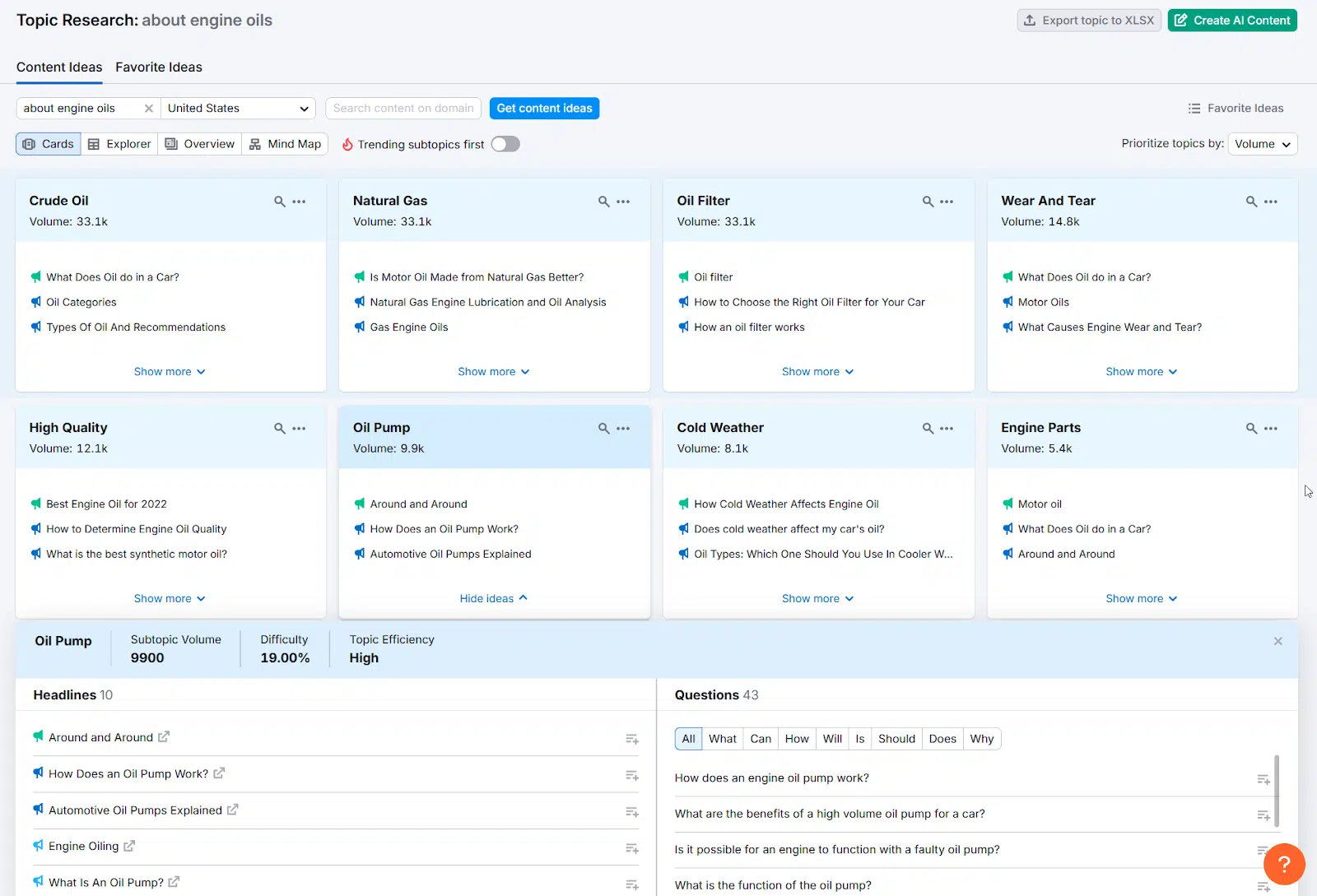
Here’s an example of how you might create pillars for a web hosting content marketing strategy:
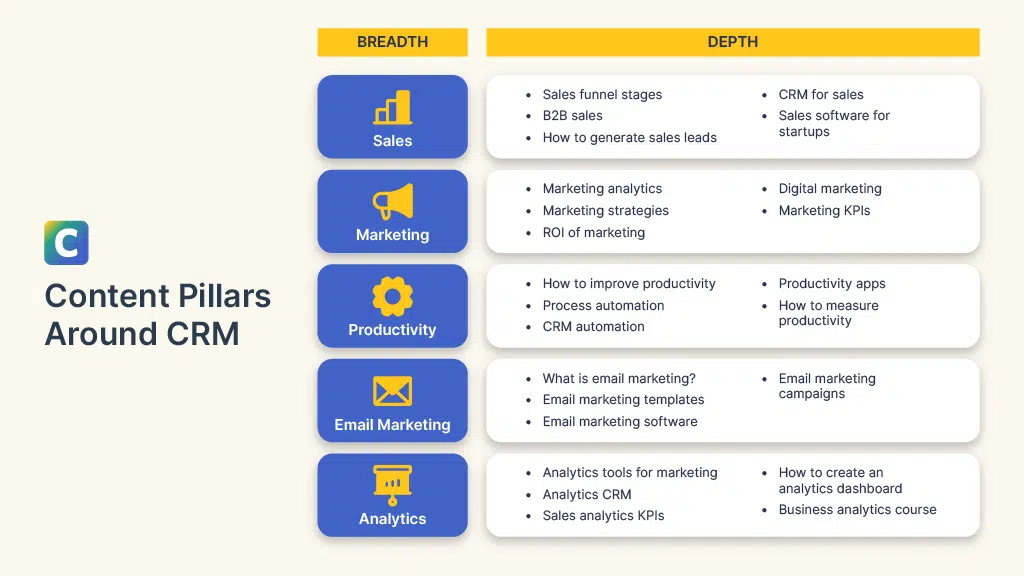
Use a content scoring system
How do you determine which content ideas are worth pursuing?
Create a scoring system.
Start by listing out evaluation criteria, which might include:
- Content relevance
- Keyword volume
- Goal alignment
- Resource requirements
Then, for each idea, assign a score from 1-5 (5 being the most ideal). Add up the scores and prioritize the highest-scoring ideas in your content calendar.
Yes, it can actually be that simple.
With this system, you don’t waste time on low-impact content. Instead, you focus on ideas that move the needle.
Set a realistic schedule
To answer the question of how often to publish new content, understand that users (and search engines) are after quality, not quantity.
For example, RTINGS.com has 4,701 pages, while TechRadar has over 168,000.
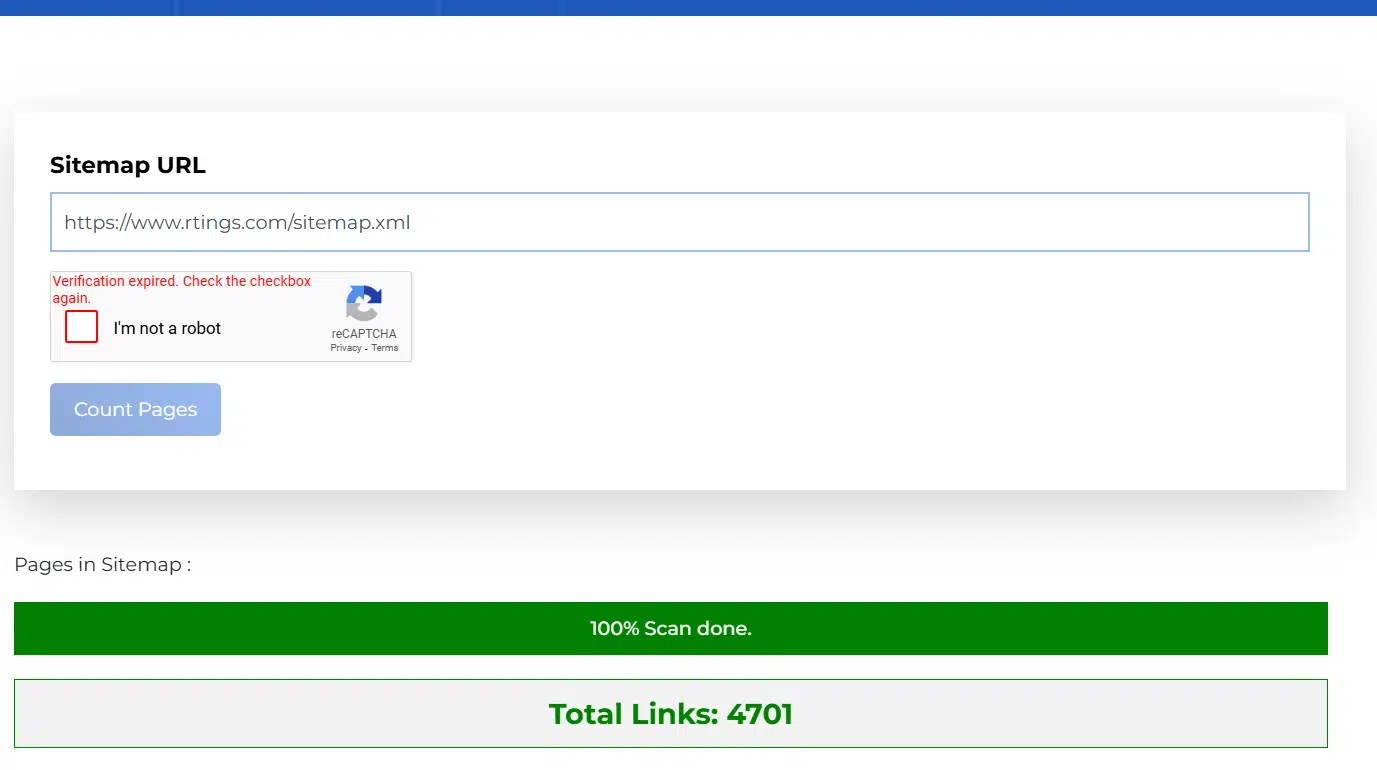

TechRadar has 35 times more pages.
But in terms of monthly organic traffic?
It only gets around 2.65 times the visits of the much smaller site.
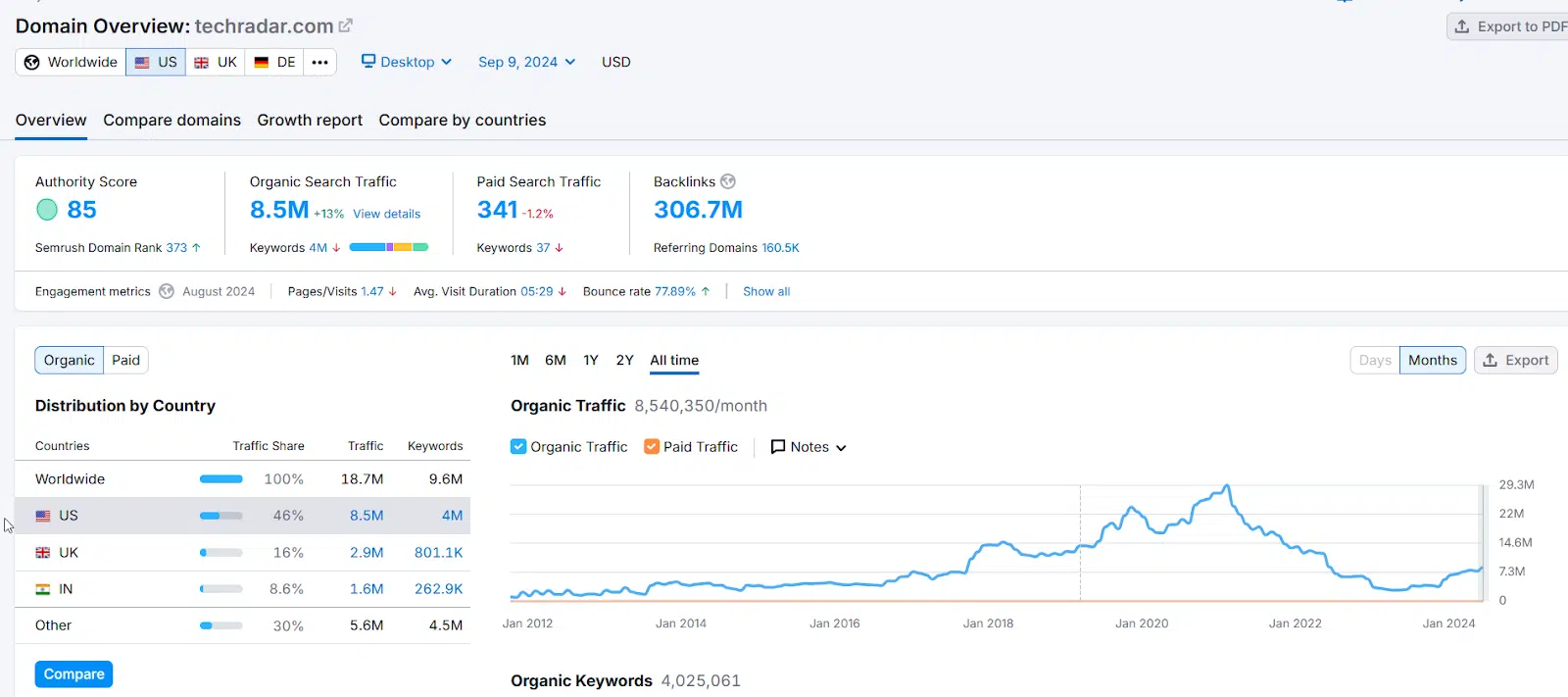
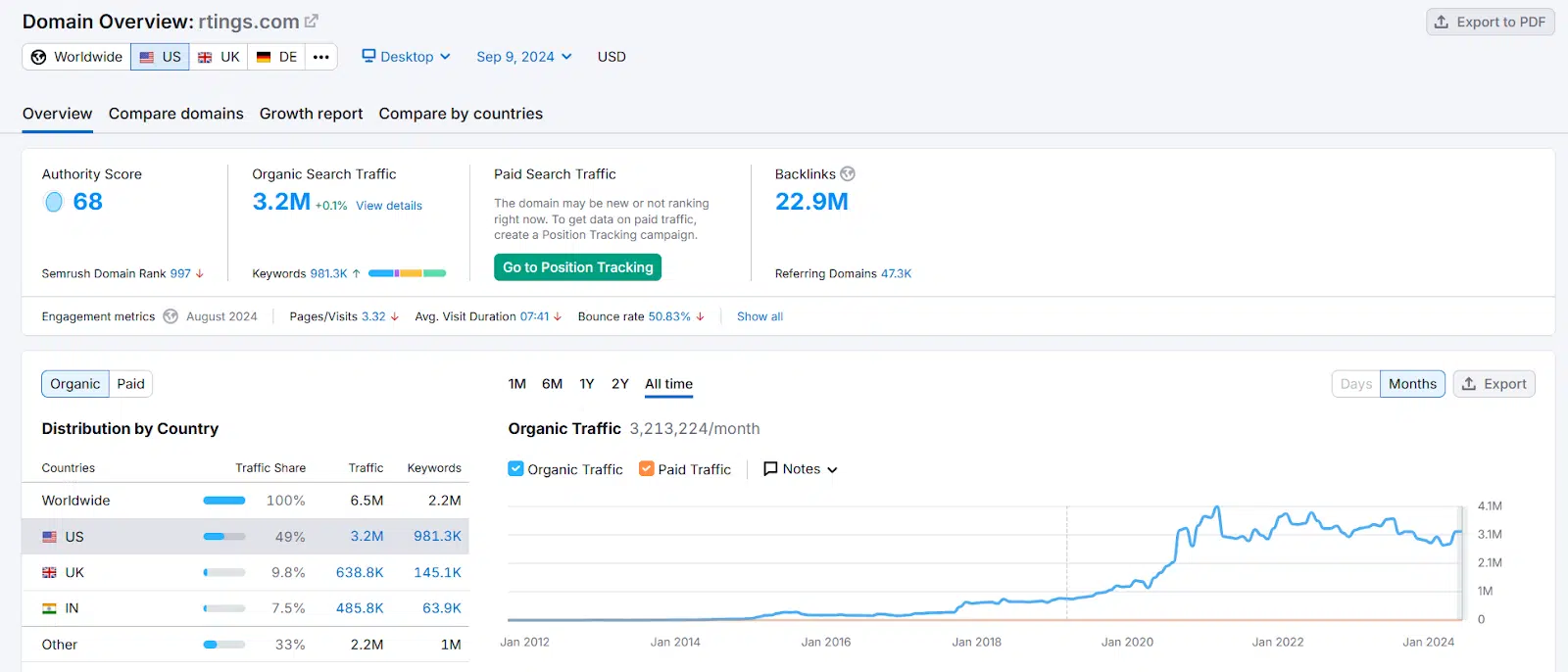
It’s tempting to focus on quantity, but focusing on quality will help you stand out from the crowd effectively.
Side note: Suddenly and dramatically increasing the number of articles you publish could potentially trigger a Google spam penalty if the quality and relevance aren’t clear. Start small and be consistent with whatever you commit to so that you can start to build trust with your audience. A few new articles per month is better than five in one month, two another, and zero the next.
Create a content calendar
For long-term content planning, you’ll get the best results by setting up (and actually using) a content calendar.
Specifically, you’ll want to include:
- Topics
- Target keywords
- Type of content
- Due dates and desired publish dates
- Promotion channels
- Assignees
Semrush’s editorial calendar template is an excellent resource for collating these details and planning your next steps.
While you’re thinking ahead, consider how to plan your corresponding promotion strategy.
For each content asset, add content distribution specifics, such as:
- Email segments to notify
- Influencers to reach out to
- Paid promotion budget (if applicable)
Step 4: Optimize for search engines (without being spammy)
With the right approach, you can effectively create content that appeals to your human buyers while also getting indexed in relevant searches. You don’t have to pick one over the other.
Use tools like Semrush’s Keyword Magic Tool to find 5-10 relevant keywords for each piece of content.
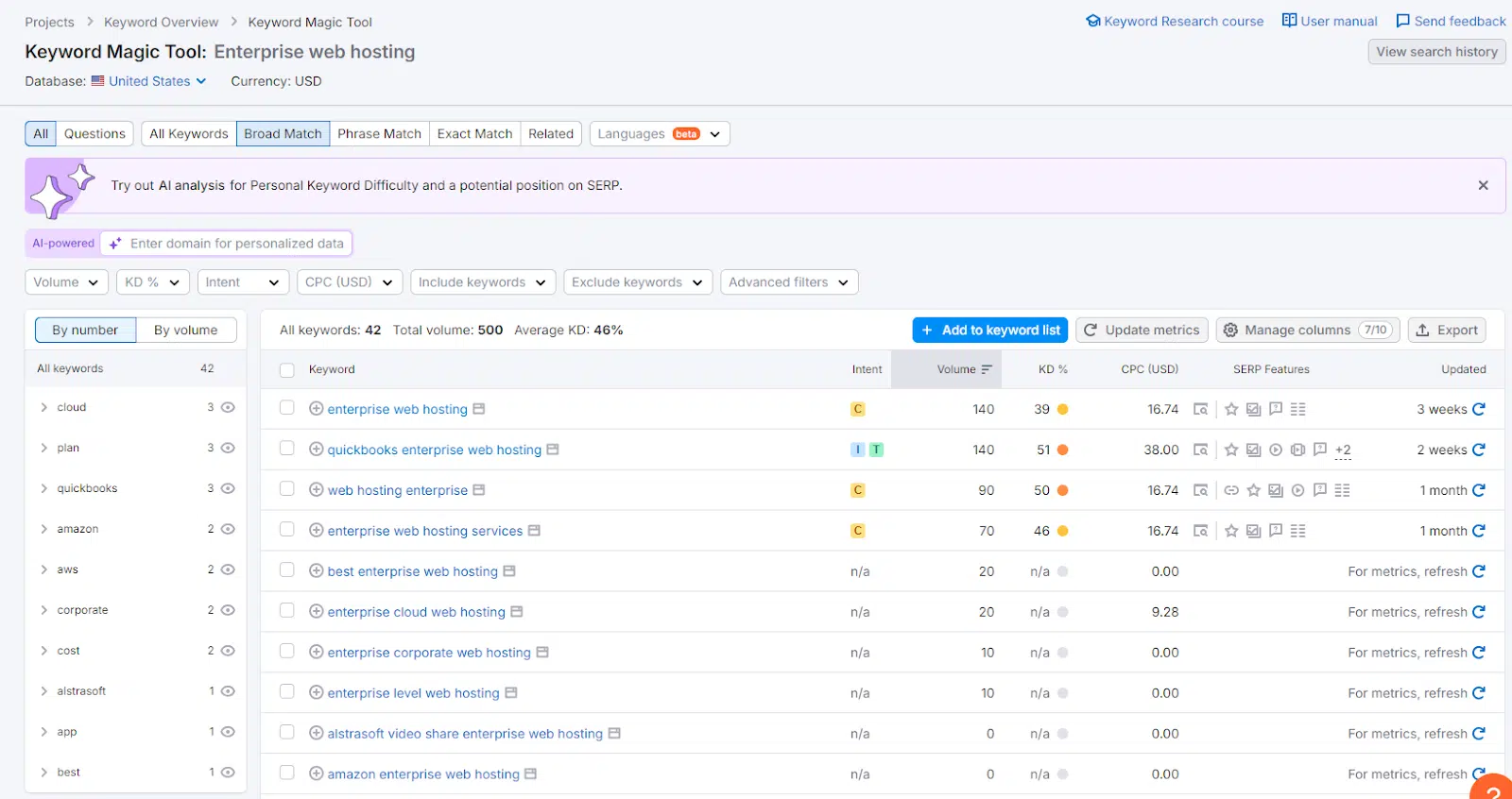
Your keyword search volume can tell you:
- Topic importance
- Search intent
- Competition level
- Content depth
- Seasonal trends
Next, conduct a keyword gap analysis. Find topics your competitors are ranking for that you don’t.
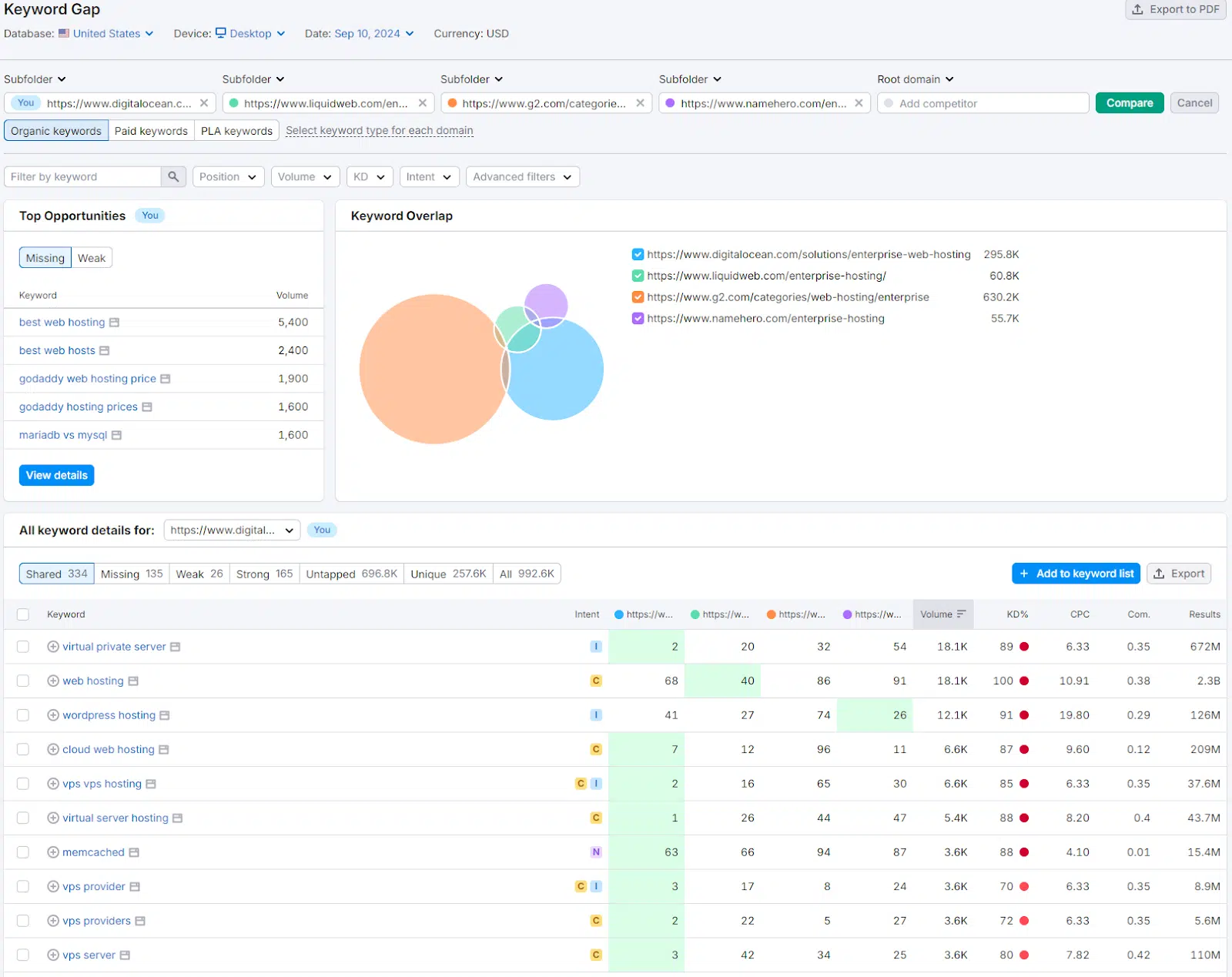
As you gain familiarity with your industry, understanding how these elements change over time will help you distinguish high-potential ranking opportunities from oversaturated ones.
Here’s a quick on-page SEO checklist you can use as the foundation for your approach:
- Title tag includes target keyword (50-60 characters)
- Compelling meta description with target keyword (145-155 characters)
- Properly structured headers (H1, H2, H3) with relevant keywords
- Images have descriptive alt text that implements target keywords
- Internal links to related content
- External links to authoritative sources
Implementing schema markup is another way to enhance your SERP appearance.
Step 5: Choose your content types and channels wisely
Not all content types are created equal.
These are some of the most common formats to consider for your content marketing strategy—each ultimately serving a different purpose:
- Blog posts
- Ebooks
- Podcasts
- Case studies
- White papers
- Videos
- Infographics
- Comparison articles
- How-to articles
Note: If this is your first foray into content marketing, keep it simple. Blog posts are a good place to start. That said, in certain niches, white papers and ebooks might hold more value when it comes to moving prospects through the buyer’s journey.
Remember when we discussed how quality is more important than quantity?
That’s because your high-quality content assets can serve as the basis from which to repurpose to other media.
To determine where your initial efforts will have the most impact, create a simple matrix to prioritize channels and maximize cross-channel publication in terms of:
- Audience presence
- Resource requirement
- Potential impact
Focus on the channel with the highest total scores.
When it comes to devoting a budget to building up a certain channel, consider the impact of whether you ultimately own the resulting audience relationship.
For example, brands that invested significant resources into building a presence on Facebook were once rewarded with seemingly limitless organic reach.
However, now it’s much harder to achieve that same reach organically—even to engage with users who already “like” your brand on the platform.
Step 6: Leverage AI (but don’t rely on it completely)
AI has certainly been shaking up the content marketing world ever since commercially available tools like ChatGPT came to market.
That said, while 83.2% of content marketers plan to use AI tools in 2024 (up from 64.7% in 2023), human-created content is still crushing it.
Nearly 21% of marketers using purely human-created content report being “very successful.”
AI users? Only 12% hit that mark.

There are many crucial questions remaining about how to use generative AI.
At this time, a good general guideline when using AI for content creation is to leverage it to get from step 1 to step 2 (from a blank page to several title ideas with one prompt), not step 1 to step 10 (a blank page to a complete article with one prompt).
Tip:
✅ Use AI for: Step 1 → Step 2
(Blank page → Title ideas)
❌ Avoid using AI for: Step 1 → Step 10
(Blank page → Complete article)
In other words, AI can be a useful copilot, but great content still needs human input throughout the process.
Step 7: Promote your content
Here’s a harsh fact:
If you just build it, they won’t come.
As soon as you hit “publish,” think of that as step 0 in your content promotion strategy.
Inbound marketing expert Andy Crestodina of Orbit Media teaches that you should build anticipation for an article before publishing it so that readers will be waiting to consume it.
Use this content promotion checklist as a foundation from which to build your own based on the specific channels where you connect with your target audience:
- Social media sharing (organic)
- Email newsletter
- Internal company communication
- Subreddits, Facebook groups and industry forums
- Relevant online communities
- Paid social promotion
Tip: Ross Simmonds’ book “Create Once, Distribute Forever” is an excellent resource for building out a robust content distribution plan.
Step 8: Track your results
If you’re not measuring your results, how can you be sure that your content marketing strategy is working?
Make sure to set up analytics tracking. Google Analytics is a popular option, but alternatives are available, such as Matomo or Fathom Analytics. Start with the basics by tracking metrics like page views, time on page, and bounce rate.
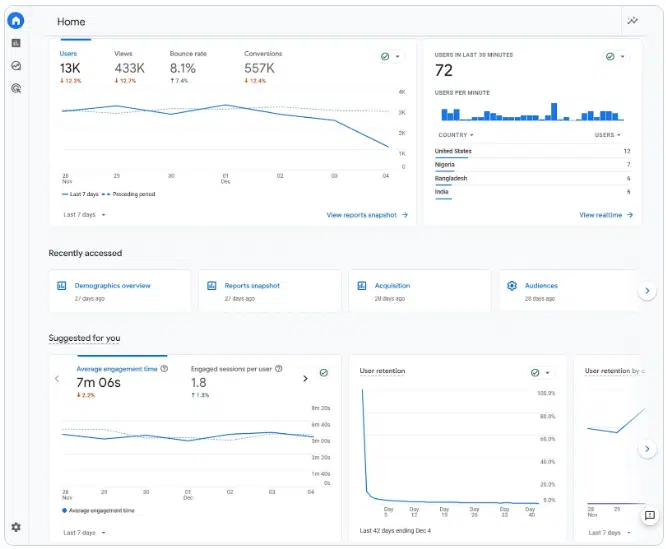
Analyze your top-performing pages to understand what’s working with your audience so that you can replicate it.
Add an additional layer of data and analysis using a heat mapping and user session recording tool like Hotjar.
Being able to actually see how real humans interact with your content can add some color to more basic data points offered by your analytics program.
Finally, keep tabs on your SEO success via keyword rankings with a tool like Semrush’s Position Tracking. Use it to get instant insights into where you and your competitors fall in top 3, 10, 20, 100, and even paid Google Ads rankings.
Aside from making sense of the competitive landscape, you can also find opportunities to land SERP features and even check for keyword cannibalization.
The report should look something like this:
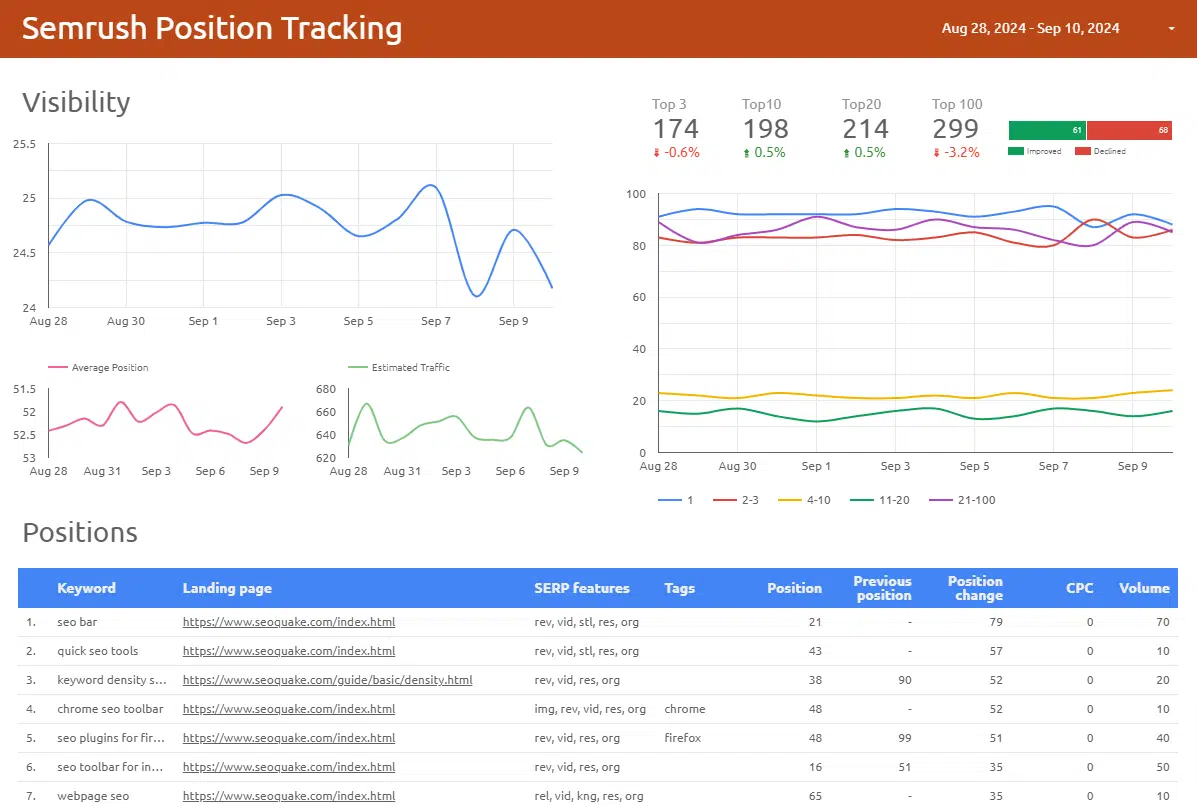
Ideally, your position report should show a steady increase over time. However, major changes in your rankings can indicate an upset by a competitor or an algorithm change.
Collate data from all the tools you use to measure your strategy’s effectiveness with a tracking dashboard.
This could include details such as:
- Top 10 pages by traffic
- Top 10 pages by conversions
- Top five traffic sources
- Content ROI
- Keyword ranking changes
Tip: Don’t fall into the trap of collecting data like we used to collect Pokemon cards—leaving them to sit around attracting dust until we got the random urge to look at them again. Instead, make time to review your content performance at least once a month to watch for major shifts.
Step up your content marketing game
Setting and following a solid content marketing strategy are both important for getting results.
Sounds simple enough, but many fail when it comes to following through.
You’ll get even better results by understanding how to collect relevant data and act on it.
With a free Semrush account, you get access to all the data and tools you need to create and carry out your content marketing strategy.
Make a buyer persona, perform keyword research, track your keyword rankings, optimize your strategy, and more—all from one platform.
New on Search Engine Land